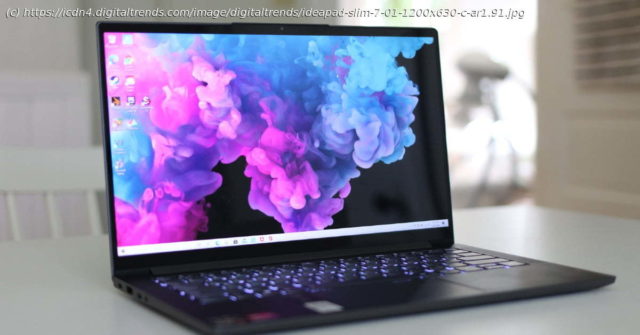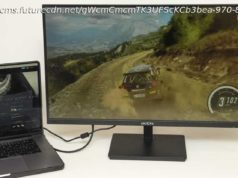As impressive as AMD’s Ryzen 4000 processors are, it’s always needed a proper flagship laptop to showcase its potential. Is that the Lenovo IdeaPad Slim 7?
Disruption. It’s not a word I use idly, but what AMD’s Ryzen 4000 processors have done in the past eight months fits the definition. These chips offer the kind of performance that you previously had to pay dearly for, both in size and in price. But so far, few laptops have been designed from the ground up to take advantage of these chips. The Lenovo IdeaPad Slim 7 was always supposed to be a showcase for just how disruptive Ryzen 4000 could be. After being delayed many months, it’s finally arrived to attempt a seemingly insurmountable task — to be a laptop that can be ultrasleek, ultrapowerful, and ultra-affordable, all at once. Did AMD and Lenovo just pull off the impossible? The IdeaPad Slim 7’s revolution isn’t highly broadcast. It’s not ugly, but it’s not attention-seeking, either. It doesn’t stray far from Lenovo’s current crop of conservative, dark gray laptops with rounded edges and an all-metal chassis. From the design alone, you’d be hard-pressed to pick this out of Lenovo’s large lineup of similar-looking laptops. It supposedly comes in a potentially more flashy “Orchid” color option, but I’ve yet to lay eyes on it. In some sense, that’s a shame. In many ways, the Lenovo IdeaPad Slim 7 throws out our traditional laptop categories. This is a tiny laptop. It’s just 0.58 inches thick, thinner and sleeker than the MacBook Air. It weighs just 3.1 pounds, matching the MacBook Pro 13-inch — and yet it has an eight-core processor like the behemoth MacBook Pro 16-inch. That’s the unique proposition of this fascinating laptop. The MacBook Pro 13-inch might be the best size comparison to make. The IdeaPad Slim 7 is slightly smaller in almost every dimension, though not by much, and even has the larger 14-inch screen. More importantly, though, these two laptops share in common a 25-watt processor. That’s 10 more watts of performance than your standard 13-inch laptop, which contributes to the unique performance proposition of these laptops. Around the sides of the laptop, you’ll find a healthy assortment of ports. On the left side, the IdeaPad Slim 7 has two USB-C ports, HDMI, and a 3.5mm headphone jack. Meanwhile, on the right side, the IdeaPad Slim 7 offers two USB-A 3.2 Gen 1 ports, the power button, and a micro SD card slot. Because this is an AMD laptop, you don’t get Thunderbolt 3, which is proprietary Intel technology. However, USB-C is still a versatile port. Either USB-C port can be used for charging, connecting to a monitor, transferring files, and plugging in peripherals. You can’t power an external graphics card, but for what this laptop was made for, these ports are plenty powerful. My only real complaint is that because both USB-C ports are on the left side, you can’t charge the laptop from the right. It defeats the point of USB-C’s versatility. A 25-watt,8-core processor in a small laptop is an intriguing premise, but only if it can actually deliver significantly better performance. I started my testing with Geekbench 5 and Cinebench R20, two benchmarks that can provide a well-rounded picture of how powerful the CPU is. The IdeaPad Slim 7 impressed, especially in multi-core performance. Amazingly, in Geekbench 5 multi-core, it was only 9% behind the much larger Dell XPS 15 with its 45-watt eight-core processor. Meanwhile, it was a solid 23% ahead of the MacBook Pro 13-inch (with a 10th-gen Core i5), and 16% ahead of the Acer Swift 3 (with the Ryzen 7 4700U). No laptop in this size category has the cores and threads to match the IdeaPad Slim 7. For a more real-life test, I encoded a 4K video in Handbrake with performance restricted to the CPU. Again, the IdeaPad Slim 7 and its eight-core Ryzen processor blew the competition out of the water.






